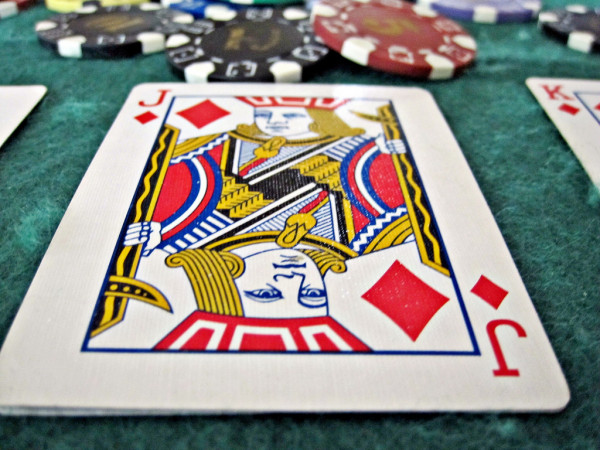Practicing Poker - How to Do it Right
2018-12-07 10:10:00

So, you’re new to the online casino scene, you signed up for your chosen online provider, and after a few spins on the slots, you decided that you’d like something a little more challenging. Blackjack doesn’t do it for you, but poker, on the other hand, looks fascinating. There’s only one problem: you don’t know your flush from your straight house. The truth is you’re not even sure how many cards you need to get started.
Have no fear because every poker player started somewhere, and if you’re starting from scratch, then there are tons of free resources out there to help you improve your game. But once you learned the basics, the key to success lies in practice, practice, practice. Here’s how you go about that the right way.
Study Time

First up, it’s time to study. Now, most online poker platforms have tutorials located somewhere on their site. These tutorials are an excellent way to learn the various hands and the ins and outs of some basic strategies to get you started.
However, if you’re serious about your game (and you should be), then there are many books written by poker pros that teach you everything from adopting the right mindset to in-depth strategies for long-term gains. One of the best books, though, is David Sklansky’s The Theory of Poker. This book lays down the foundations of poker play in such a way that it stood the test of time since its original publication back in 1987.
Sklansky goes into a lot of detail in his book. He explains the psychology of poker, bluffing, raising and the value of the position. For a beginner to the game, this book is about as good as it gets.
But don’t stop there. If you find anything written by a poker pro, then read it. Beginners should digest as much information and theory on the game as is humanly possible. It might seem a bit over the top, but reading is one of the best forms of study at the outset of your poker journey.
Twitch

Of course, no one expects you to lock yourself away with a ton of books and read all day and night. You can also watch the pros in action. Twitch is a live-streaming platform that gives YouTube a run for its money when it comes to live-streaming poker. The platform has become a home from home for thousands of poker players who tune in to watch their favourite pros talk their way through a game.
Players like Parker Talbot (Tonkaaaap) play regular live games on Twitch and often explain to their subscribers what they do. That offers you an incredible insight into the mindset of a player who makes money and wins hands. Knowing why they play a specific hand while folding another is a fantastic way to learn and exposes you to new strategies that your reading may not cover.
Following players on Twitch also gives you a better understanding of the intricacies of online poker, which Sklansky’s book doesn’t include. You get to see first-hand the etiquette involved with playing in online rooms and how to play and display hands. But most importantly, you get to see how much fun it is.
Free Online Play
Yes, that’s right you can play poker online for free. And no, we’re not talking about some mid-90s-era player vs. robot title, we’re talking real poker games on a trusted site. Online poker giant 888poker offers you the chance to play live games with cash prizes for free with their sign-up bonus, but we’re equally as impressed by their free poker practice mode. This feature allows you to play real games against other players, all for virtual cash of no real value.
Entry to the games is free (obviously), and you get to pit your wits against people of a similar skill level. The ability to play others without the pressure of a cash game allows you to try out your strategies and take chances without the fear of losing your bet. It’s as good an opportunity to practice as you can get.
The Home Game
For many people, this is how they got into poker in the first place. The home poker game is a tradition as old as the game itself and one that could help you brush up on your skills. Inviting a few friends over for a home game of poker is an excellent way to experience live poker without the stress of sitting at a table in a casino full of strangers.
Ideally, you play for chips with no actual money changing hands. That way like in our free poker practice suggestion, you get to play a stress-free game. However, if you do down this path, you need to be careful who you choose to invite to the game. Make it clear to your friends that you need to practice and that this is all for fun. Most poker players are always keen to teach, and if you choose the right friends to play with, you could end up learning a lot from one session.
Low Stakes Poker
Once you take the free practice option and the home game as far as you can, it’s time to start playing for real money. But you won’t jump right in at the deep end. You start slow and work your way up to the big money games.
Low-stakes poker is ideal for novice players as it allows you to experience the thrill (and pain) of playing for real money while not taking too much a risk. The object of this style of poker play is to win small but often. That means that you spend a great deal of time at the tables, which is, of course, the best thing imaginable for improving our skills.
As we said earlier, the best approach to improving your poker play is to practice as much as possible. And while in this case, practice may not make you perfect, it gives you a better chance at the tables. So, if you think that poker is your thing, read some books, try that free online poker mode, and practice, practice, practice.
Top Casinos
Best Welcome Bonus
-
 Pots of LuckEnjoy a fine 100% Welcome Bonus up to £100 plus 20 Free Spins at Pots of Luck, today!!!#Ad New Players Only. Wager from real balance first. 50X wager the bonus. Contribution varies per game. selected games only. Wager calculated on bonus bets only. Bonus valid 30 Days from receipt/ free spins valid for 7 days from issue. Max conversion: 3x the bonus amount or free spins: £20. Excluded Skrill deposits. Withdrawal requests voids all active pending bonuses. Full T&C's Apply apply. 18+. BeGambleAware.org.Read ReviewClaim Bonus
Pots of LuckEnjoy a fine 100% Welcome Bonus up to £100 plus 20 Free Spins at Pots of Luck, today!!!#Ad New Players Only. Wager from real balance first. 50X wager the bonus. Contribution varies per game. selected games only. Wager calculated on bonus bets only. Bonus valid 30 Days from receipt/ free spins valid for 7 days from issue. Max conversion: 3x the bonus amount or free spins: £20. Excluded Skrill deposits. Withdrawal requests voids all active pending bonuses. Full T&C's Apply apply. 18+. BeGambleAware.org.Read ReviewClaim Bonus -
 Fortune MobileGet your hands on an excellent £500 Welcome Bonus plus 150 Bonus Spins with Fortune Mobile Casino!#Ad First 3 deposits only. Min deposit £10. Max total bonus £500 and 150 spins. 30x wagering (dep + bonus). 30x on spins, 4x conversion, bonus and spins valid on selected slots. Full T&C’s apply. 18+ only, BeGambleAware.org.Read ReviewClaim Bonus
Fortune MobileGet your hands on an excellent £500 Welcome Bonus plus 150 Bonus Spins with Fortune Mobile Casino!#Ad First 3 deposits only. Min deposit £10. Max total bonus £500 and 150 spins. 30x wagering (dep + bonus). 30x on spins, 4x conversion, bonus and spins valid on selected slots. Full T&C’s apply. 18+ only, BeGambleAware.org.Read ReviewClaim Bonus -
 Cosmic SpinsEnjoy a terrific 100% Welcome Bonus up to £100 plus 100 Bonus Spins at Cosmic Spins!#Ad First deposit only. Min deposit £10. 100% Bonus Match on 1st deposit, max £100 bonus & 100 bonus spins on Starburst. 40x wagering(dep+bonus). 40x on spins, 4x conversion, bonus valid on selected slots. Full T&C’s apply. 18+ only, BeGambleAware.org.Read ReviewClaim Bonus
Cosmic SpinsEnjoy a terrific 100% Welcome Bonus up to £100 plus 100 Bonus Spins at Cosmic Spins!#Ad First deposit only. Min deposit £10. 100% Bonus Match on 1st deposit, max £100 bonus & 100 bonus spins on Starburst. 40x wagering(dep+bonus). 40x on spins, 4x conversion, bonus valid on selected slots. Full T&C’s apply. 18+ only, BeGambleAware.org.Read ReviewClaim Bonus -
 UnibetDeposit with £10 to get £40 with Unibet!#Ad 18+. BeGambleAware.org. New Customers only. Minimum Deposit £10 and Get £40 in Casino Bonus Funds. Debit card only. Up to 50x wagering, game contributions vary, max. stake applies, new customers must opt in and claim offer within 24 hours and use within 30 days. See full terms.Read ReviewClaim Bonus
UnibetDeposit with £10 to get £40 with Unibet!#Ad 18+. BeGambleAware.org. New Customers only. Minimum Deposit £10 and Get £40 in Casino Bonus Funds. Debit card only. Up to 50x wagering, game contributions vary, max. stake applies, new customers must opt in and claim offer within 24 hours and use within 30 days. See full terms.Read ReviewClaim Bonus -
 PlayMagicalEnjoy a fine 100% Welcome Bonus up to £200 with PlayMagical!#Ad New Players Only. Wagering occurs from real balance first. 50X wagering the bonus. Contribution may vary per game. Available on selected games only. The wagering requirement is calculated on bonus bets only. Bonus valid 30 Days from receipt. Max conversion: 3 times the bonus amount. Withdrawal requests voids all active/pending bonuses. Excluded Skrill deposits. Full Terms apply. 18+. BeGambleAware.org.Read ReviewClaim Bonus
PlayMagicalEnjoy a fine 100% Welcome Bonus up to £200 with PlayMagical!#Ad New Players Only. Wagering occurs from real balance first. 50X wagering the bonus. Contribution may vary per game. Available on selected games only. The wagering requirement is calculated on bonus bets only. Bonus valid 30 Days from receipt. Max conversion: 3 times the bonus amount. Withdrawal requests voids all active/pending bonuses. Excluded Skrill deposits. Full Terms apply. 18+. BeGambleAware.org.Read ReviewClaim Bonus

